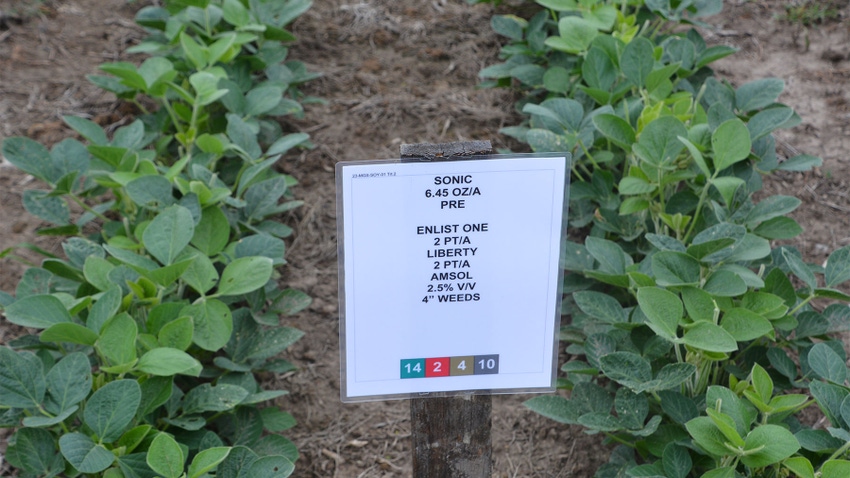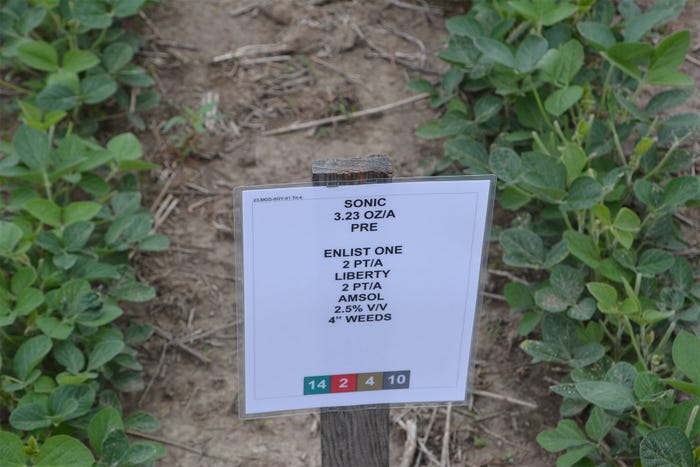
If you still prefer putting your own herbicide recipes together rather than relying on your retailer or a consultant, you could learn valuable lessons from walking through the Purdue University weed control plots — especially if Bill Johnson, Purdue Extension weed control specialist, walks alongside to answer questions.
Most of Purdue’s herbicide comparison plots are located at the Throckmorton farm, south of Romney, Ind., in two separate locations within the farm. Here’s an example of a lesson learned walking the plots this summer. It’s actually a two-for-one lesson, with two key take-home points.
Full rate matters
Look at the two pictures (above and below). One soybean plot was sprayed with Sonic at the full-labeled rate, and the second plot with Sonic at half rate. The other herbicides in the program remained the same in both plots.
“The first thing you notice is the difference in weed control,” Johnson says. “Where we applied a full rate of the residual herbicide, the entire plot is very clean. At this point in the season, we have no weeds coming through and escaping control.
“Now look at the plot where we used a half-rate of Sonic. Everything else was the same. The control is still reasonably good, but note that some weeds are already starting to break through control. Those weeds would be even more apparent later in the season.”

WEEDS BREAK THROUGH: Dropping to a half rate of Sonic in the weed control program resulted in weeds breaking through at a relatively early point in the season.
What is the take-home point? “Growers like to cut back on rates, especially in programs where they are using several herbicides,” Johnson explains. “The price tag can get fairly high per acre. In fact, some chemical salespeople don’t always suggest full labeled rates of their own products because they know it’s a competitive market. They’re trying to hold down cost of the overall weed control program.
“The treatment with the half-rate of residual herbicide was cheaper, but look at the difference in control. Some weeds coming in late will likely produce seed. If it’s something like waterhemp, and there was waterhemp in these plots, we simply can’t afford to let them go to seed. The day is coming when waterhemp is going to be resistant to nearly all herbicides. We must get serious about controlling it now.”
Weed size matters
Overall control in these plots was good, especially at the full-labeled rate of Sonic. “There is another lesson here that you don’t want to miss,” Johnson adds. “Look what it says about weed size on the sign.”
Indeed, according to the informational sign, the weeds were 4 inches tall when the postemergence spray was applied. That’s roughly the height of a 12-ounce soda can.
“We can’t overemphasize the importance of spraying small weeds in a post program,” Johnson says. “If we had waited until weeds were bigger to make the post application, the results would not look as good. People tend to underestimate weed size, but it’s important to get it right. Spraying small weeds is a real key.”
About the Author(s)
You May Also Like




